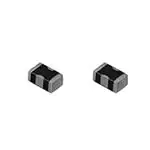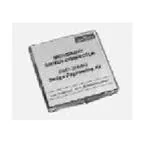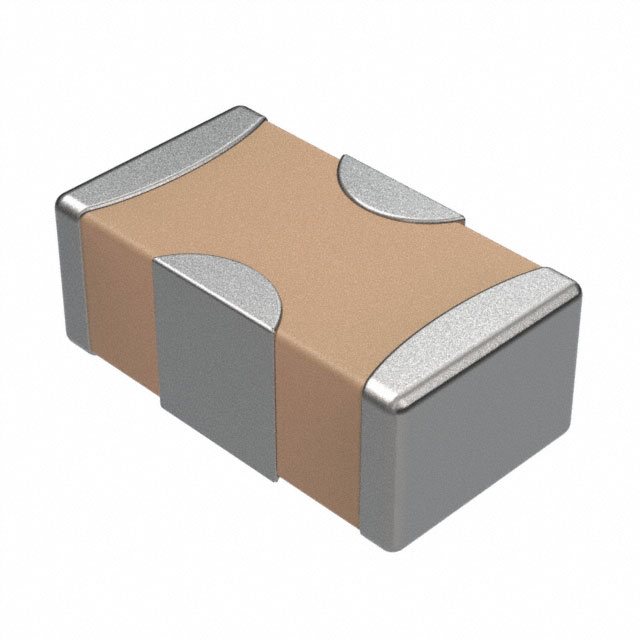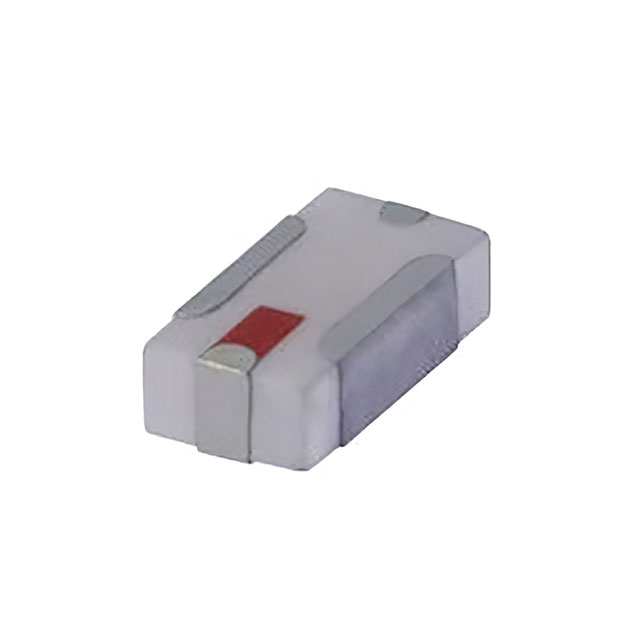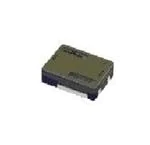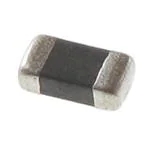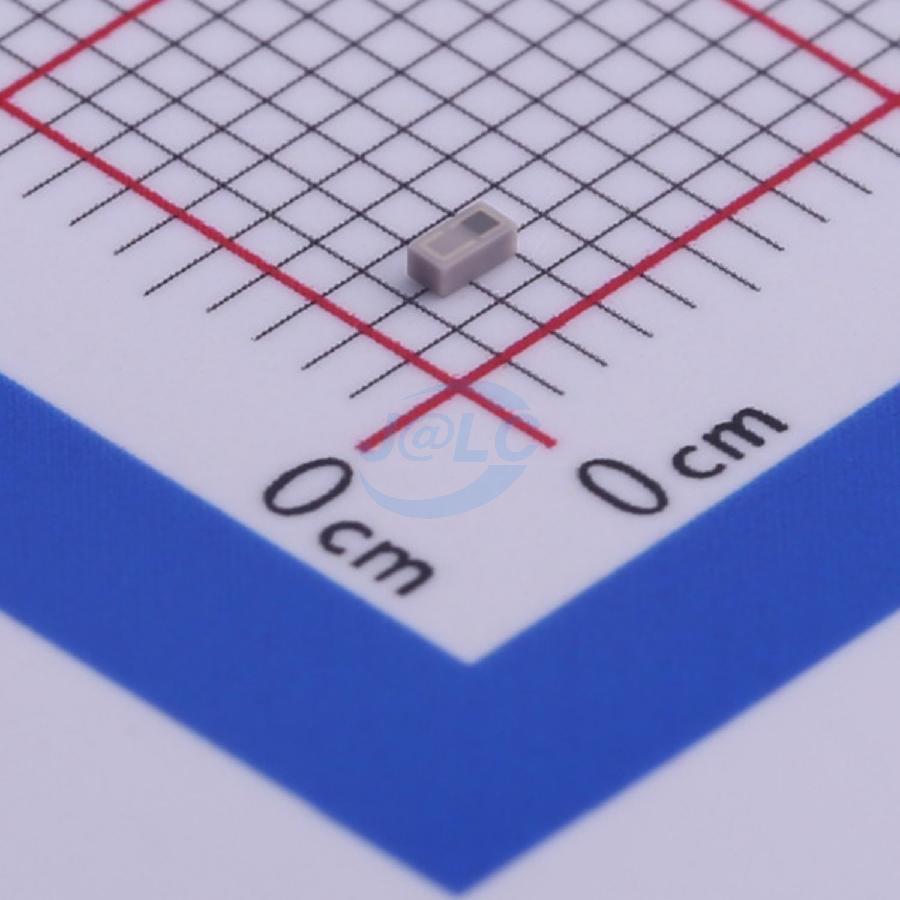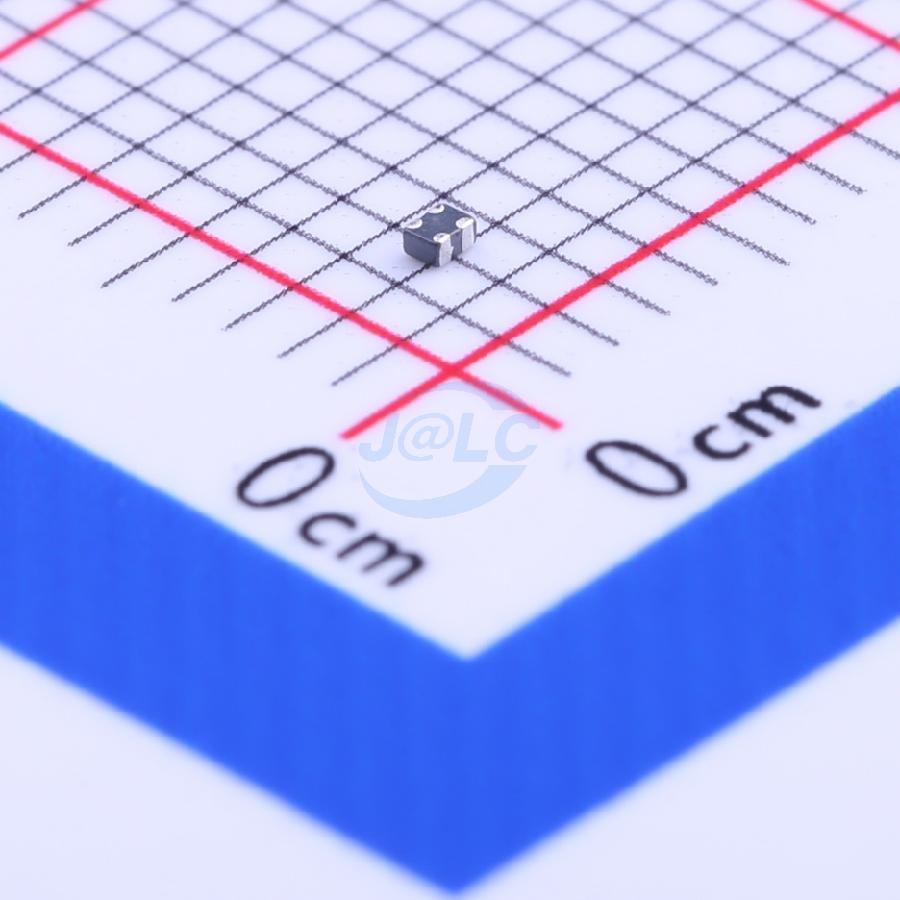BLM18KG101TN1D Ficha técnica | Precio y PDF
- Tipo de filtro: Línea eléctrica
- Impedancia a frecuencia: 100 Ohms @ 100 MHz
- Clasificación actual (máx.): 3A
- Paquete: 0603 (1608 métrico)

Envío GRATUITO para pedidos superiores a HK$250.00

Respuesta rápida, cotización rápida.

Envío rápido, sin preocupaciones posventa.

Canal original, garantía de los productos auténticos.
BLM18KG101TN1D
BLM18KG101TN1D from Murata is a compact ferrite bead ideal for filtering out high-frequency noise and interference. If you’re designing compact electronics—like smartphones, tablets, Bluetooth headsets, or cameras—this tiny 0603-sized bead is perfect.
It provides 100Ω impedance at 100MHz, handles currents up to 300mA, and effectively reduces electromagnetic interference (EMI) on power or data lines. So if you’re tight on PCB space and need solid RF noise suppression, this little component makes things simple.
BLM18KG101TN1D Equivalent

| Parámetro | BLM18KG101TN1D | MPZ1608S101ATAH0 | BLM18SP101SH1D | BBUP00160808101Y00 |
|---|---|---|---|---|
| Impedance (100MHz) | 100Ω | 100Ω (actual ~120Ω) | 100Ω | 100Ω |
| Max Current | 3.0A | 3.0A | 3.7A | 3.0A |
| Resistencia de CC (DCR) | ≤30 mΩ | ≤30 mΩ | Approx. 22 mΩ | ≤30 mΩ |
| Operating Temperature Range | −55°C ~ +125°C | −55°C ~ +125°C | −55°C ~ +125°C | −55°C ~ +125°C |
| Package Size (mm) | 1.6 × 0.8 × 0.6 | 1.6 × 0.8 × 0.6 | 1.6 × 0.8 × 0.8 | 1.6 × 0.8 × 0.95 |
| Package Code (Metric) | 0603 | 0603 | 0603 | 0603 |
| Qualification Grade | General Grade | Automotive Grade (AEC-Q200) | General Grade | General Grade |
If you’re looking to replace the BLM18KG101TN1D, here are some good alternatives:
MPZ1608S101ATAH0 offers slightly higher impedance, great for stronger noise suppression, but might affect certain high-frequency signals more.
BLM18SP101SH1D handles higher current with lower resistance, perfect for high-current power filtering, though it’s slightly thicker.
Pulse BBUP00160808101Y00 is a bit taller, but closely matches Murata’s specs. If height isn’t a big deal, this is a solid pick.
When picking alternatives, always consider package compatibility, electrical specs, and your real-world application scenario, rather than focusing on just one parameter.
BLM18KG101TN1D EMI Filter Circuit Example
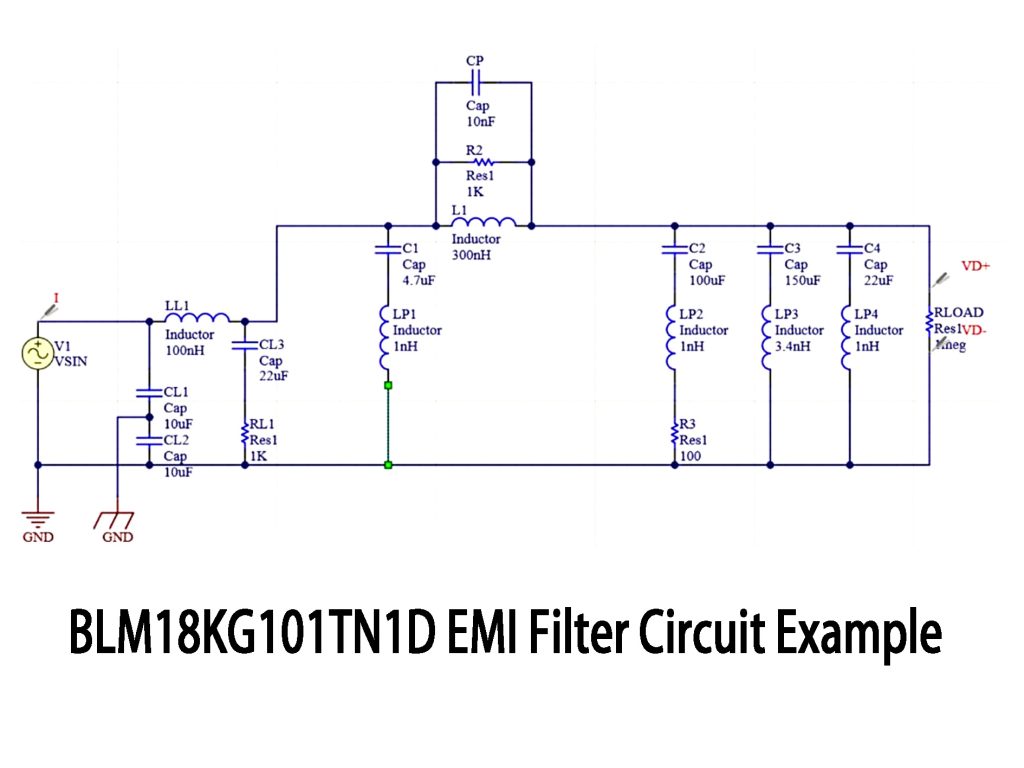
This circuit diagram is a great example of how to use BLM18KG101TN1D ferrite beads for EMI filtering. The circuit uses multiple inductors and capacitors arranged into π or T-type filters to effectively remove high-frequency noise from power lines.
Though it doesn’t explicitly show BLM18KG101TN1D, you can easily replace inductors like LP1 or LP2 with this ferrite bead. Its 100Ω impedance at 100MHz is ideal for cutting down high-frequency interference. Plus, additional inductors, capacitors, and resistors at the input side help further reduce noise.
In short, this multistage filtering design gives you cleaner, more stable power, ideal for applications sensitive to electromagnetic interference.
BLM18KG101TN1D Use
The BLM18KG101TN1D from Murata is a handy little ferrite bead that’s perfect for filtering out high-frequency noise on your power and signal lines.
When you’re designing circuits, placing it between your power source (like 3.3V or 5V) and sensitive ICs or MCUs helps block unwanted high-frequency noise. It’s also effective on signal lines such as USB, HDMI, or RF, especially if you’re aiming to pass strict EMC tests.
For even better noise reduction, pair it with a capacitor to create a simple low-pass filter.
Its impedance is 100Ω at 100MHz, and it handles currents up to 2A easily. The compact 0603 package keeps your PCB layout tidy, and its low DC resistance means minimal voltage drop.
Simply put, if your design needs clean power or is sensitive to RF interference, adding this ferrite bead is a quick and effective solution.
BLM18KG101TN1D PCB Layout Guide
When you’re placing the BLM18KG101TN1D ferrite bead, keep it close to the noise source or the IC’s power pin, typically between your power line (3.3V or 5V) and IC’s VDD. Immediately follow it with a decoupling capacitor (like 0.1µF or 1µF) to form an effective π-filter.
Routing is important too—use short and wide traces before and after the bead to minimize voltage drop and interference. Keep your ground connection short, tied directly to a solid ground plane to reduce EMI. And remember, ferrite beads always go in series, never parallel; they’re designed to block high-frequency noise, not shunt it.
In short, keep placement tight, traces short and wide, pair it with a cap, and you’ll get cleaner power lines instantly.




